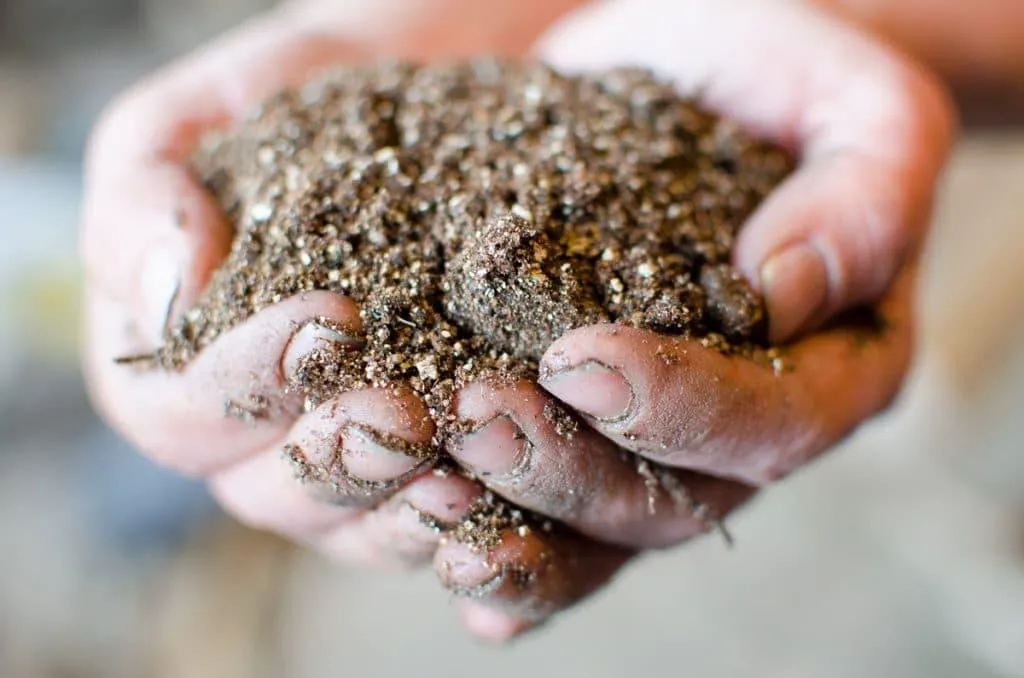News
Discover all the latest news, events and happenings at the Lost Plot right here! Bookmark this page and return soon!

DIY Potting Mix
How to make your own Potting Mix
NOTES FROM A WORKSHOP AT THE 2018 SPRING FAIR.
Plants need oxygen, water, nutrients, stability and light. Soils give them the first 4 of these. When we put a plant into a pot, we have to try and replicate the conditions of the soil, but in a much more confined space. In making our own potting mix, we are basically trying to balance the water and air needs of the plants (via their roots).
When working with the ingredients of potting mixes, it is important to remember your safety! These materials can harbour micro-organisms and dust that may have a negative impact if inhaled. For your safety, ensure you wear a dust mask, safety glasses and gloves when working with potting mixes. Always wash your hands after mixing and potting.
There are as many recipes for potting mixes as there are veggie curry recipes and many different materials that can be used in the process. Commercial mixes will often use materials that have come from far afield. In this workshop, Ali focused on materials that can be made or produced locally, so we can all do our part towards reducing our carbon footprint.
The ingredients:
FOR WATER HOLDING:
Available to buy:
Peat – should not be used as it comes from one of only a few remaining peat bogs in the world.
Coir ‘peat’ – this is a by-product of coconut production and so far better option than above. However, it is not (to my knowledge) yet produced in Australia so always has large transport miles attached to it.
Make your own:
Leaf mould – gather leaves (ideally from deciduous trees). Place in a pile or open compost bin/container and let sit, getting wet, for at least 12 weeks.
Composted sawdust - ideally from untreated wood. Wet down, leave in out in the open and turn once a week, for 8-10 weeks.
FOR AERATION AND DRAINAGE:
Vermiculite – a naturally occurring volcanic mineral, super-heated so it ‘puffs’ up. Comes from overseas as is not naturally occurring in Australia
Perlite – glass, super-heated so it ‘puffs’ up. Not produced in Australia (that I know of).
Composted wood chip -- ideally from untreated wood. Wet down and leave out in the open and turn once a week, for 8- 10 weeks
River sand – cheap and available locally
Nutrients:
Soil – not recommended to use more than 10% in your mix
Compost – sieve it for best results and ensure it was made using the ‘hot’ method so seeds and disease are managed
Worm castings – use in small quantities in any mix (very dense so will not allow enough air if you use too much
The recipes:
BASIC POTTING MIX
1 part leaf mould or composted sawdust
1 part river sand
2 parts sieved compost
½ cup worm castings
FOR PROPAGATION MIXES (RAISING SEEDLINGS)
1 part leaf mould or composted sawdust
1 part river sand
(No nutrient required for seedlings!)
FOR VEGETABLES
1 part leaf mould or composted sawdust
1 part river sand
2 parts sieved compost
1 cup worm castings
FOR SUCCULENTS
Increase the ratio of sand in the basic mix and reduce the compost/worm castings
Other considerations:
It is a good idea to check the pH of a mix when you have made it and adjust if necessary. You want the pH to be somewhere around 6.5. (very slightly acidic).
Un-composted wood chip and sawdust are toxic to plants, so make sure you compost first
Add a slow release fertiliser (you can buy organic pelletised varieties, or use blood and bone or similar as per directions)
For vegetables, use liquid feed at least once a month
Not a member yet? Don't miss our wonderful benefits!
Spending time in the community garden is simply wonderful but don't take our word for it, here is what some of our visitors have thought when they visited our garden...

Eileen Hartley

This is an amazing place. I wish I lived in the area so I could be part of this community.

Daniel Tattersall

Lovely people, and a beautiful spot. Thanks for pizza!

Silvana WiRepa

What a great place. Such an inspiration.

Marcia Millner

Beautiful job done with the plants.

